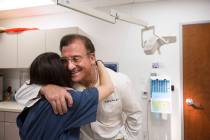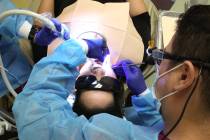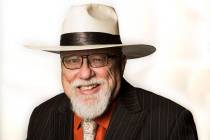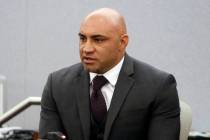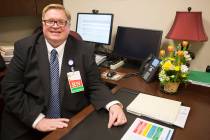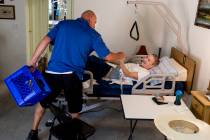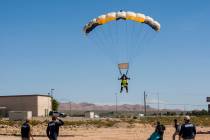Will to live remains mystery
The dead man who was brought back to life wasn’t pleased.
“Stop it,” he yelled at the medical team that had frantically used CPR, electric shock and drugs to bring him around after nearly five minutes of death. “Don’t make me come back here. I’m happy where I am.”
So lucid were the man’s words, according to Dr. Michael Casey, that the lead physician on the case ordered the emergency efforts to end.
And the elderly man soon died.
When Casey, a University Medical Center trauma surgeon, recounts what he witnessed as an operating room assistant at Sunrise Hospital more than 30 years ago, he does so to let you know that through his career in medicine he’s come to realize that the will to live, considered a basic drive in humans, remains a force that defies explanation — while always mysterious, he says it is sometimes astonishingly powerful, other times surprisingly fragile.
It is his sense, Casey says, based on years of working with people who teeter between life and death, that a definite decision is often being made by a person on whether to fight for his or her life even when others may see that person as an unconscious victim of illness or horrific injuries. “I hear some incredible stories from people who live,” he says. “Some see relatives who tell them to fight.”
When he thinks about the elderly man whose heart stopped before doctors and nurses brought him back to life, Casey believes that the man, who had been kept alive on mechanical devices, concluded he had little hope of leaving the hospital.
“They weren’t doing many transplants then,” Casey says, stressing the medical team didn’t help the man commit suicide, only stopped using extraordinary means to keep him alive. “The man was clear about his wishes and we honored them.”
If how that man’s life ended seems strange, how 53-year-old Patty Tagliamonte’s life moved forward seems just as strange. Honored along with Casey last week at the annual UMC Trauma Survivors Celebration at Caesars Palace, Tagliamonte’s story of why she fought for life is one of the most incredible Casey has heard.
In early November 2012, Tagliamonte was riding on the back of a motorcycle driven by the love of her life, David Sabatino, an airline mechanic. Riding on the back of another bike driven by Nick Griffith was her longtime girlfriend, Tanya Stegner.
At the intersection of U.S. Highway 95 and Rainbow Boulevard, Stegner said Sabatino became confused during a turn and ended up headed into incoming traffic, colliding with a pickup truck. A nurse following on another bike said Sabatino died instantly, according to Stegner.
Tagliamonte flew about 100 feet before hitting the pavement, a long way from Sabatino.
The woman who spent nearly four months in the hospital after breaking virtually every bone in her body remembers almost nothing about the accident. As she walked around her trailer home not too far from The Orleans last week, she did remember something after the accident that no one else saw.
“I could only look to my right and I saw Dave,” she says. “I could only see his face and hand up and then he told me: ‘You can’t go. It’s not your time.’ That’s when I started gasping for air and people at the accident realized I was alive. That’s all I can remember until I started coming in and out of a coma in the hospital.”
Weeks after the accident, Tagliamonte told Casey what Sabatino said to her at the accident scene.
“That didn’t seem strange to me at all,” Casey says. “Other people have said similar things to me, where dead loved ones have talked to them. I don’t pretend to understand what the mind is doing. But what happened between her and the man she loved gave her the will to fight, the will to live. It was real to her to keep her alive and for me that’s as real as it gets. I can’t do what I do alone without that will to live. I’d like to take the credit, but I can’t. Her chance of survival was less than 1 percent.”
Other than a pronounced limp in her right leg, there is no indication today that Tagliamonte’s heart stopped on three occasions as Casey fought to keep her alive, that she broke her back, her neck and her ribs, that her brain had a severe bleed, that her pelvis was shattered, that at one point in her recovery Casey stood in her room and told her relatives that unless she showed some improvement he’d turn off life support the next day.
“I don’t know whether I heard him say that or not,” Tagliamonte says, smiling. “The nurses are sure I did because I started getting better that night.”
Casey doesn’t discount the possibility.
“The mind is much more powerful than we think,” he says.
When Tagliamonte, who’s on disability but plans on joining volunteer groups “to help give people hope,” returned to the home she had shared with Sabatino, she says she woke up from a sleep the first night to see Sabatino looking at her from a perch on the wall.
“He had a smile on his face and his arms were crossed,” recalls Tagliamonte, who also suffers from lupus. “He was making sure I was all right. It was as real as him telling me it wasn’t my time to die, that I couldn’t go yet.”
Contact reporter Paul Harasim at pharasim@reviewjournal.com or 702-387-2908.








